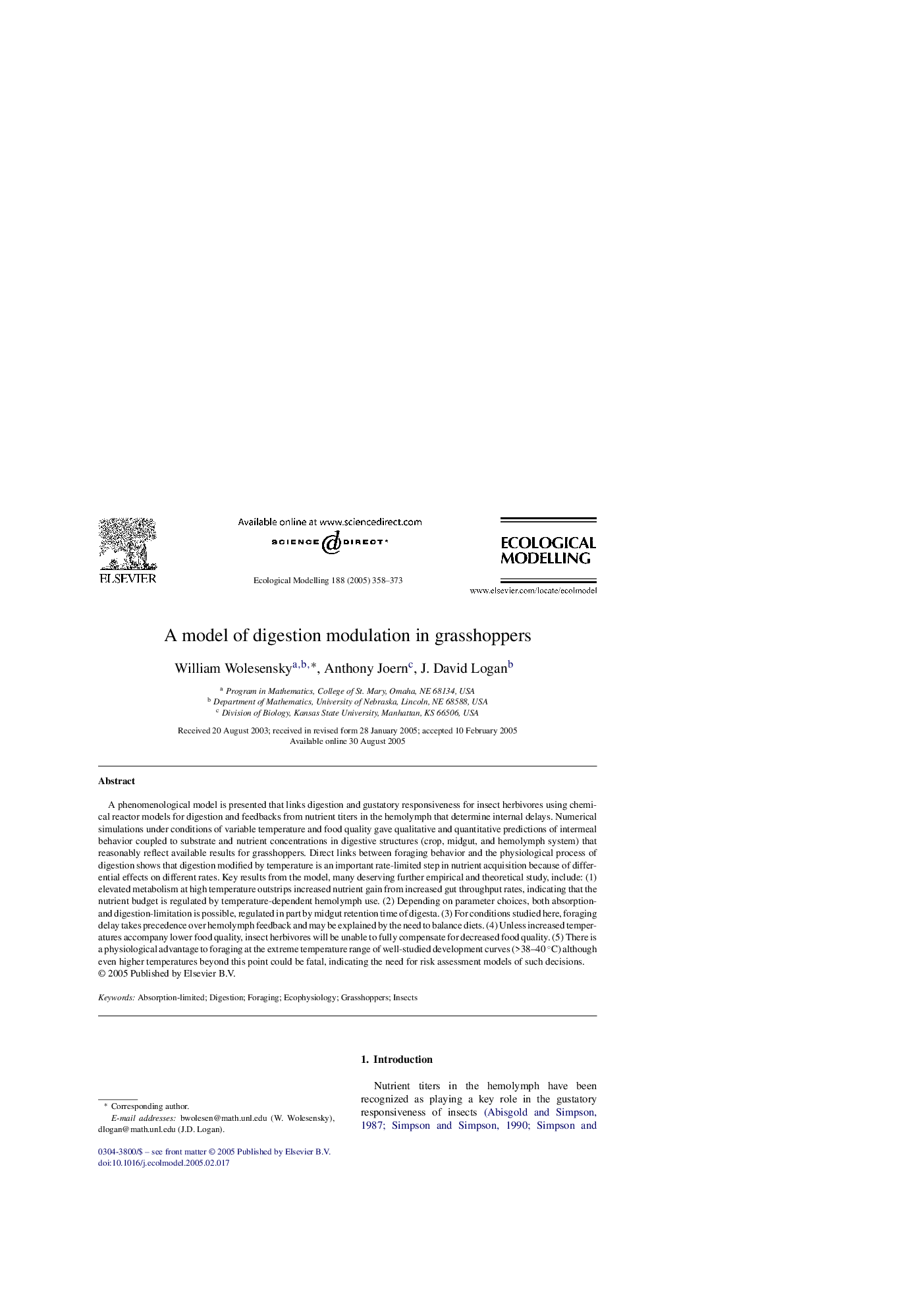| Article ID | Journal | Published Year | Pages | File Type |
|---|---|---|---|---|
| 9443522 | Ecological Modelling | 2005 | 16 Pages |
Abstract
A phenomenological model is presented that links digestion and gustatory responsiveness for insect herbivores using chemical reactor models for digestion and feedbacks from nutrient titers in the hemolymph that determine internal delays. Numerical simulations under conditions of variable temperature and food quality gave qualitative and quantitative predictions of intermeal behavior coupled to substrate and nutrient concentrations in digestive structures (crop, midgut, and hemolymph system) that reasonably reflect available results for grasshoppers. Direct links between foraging behavior and the physiological process of digestion shows that digestion modified by temperature is an important rate-limited step in nutrient acquisition because of differential effects on different rates. Key results from the model, many deserving further empirical and theoretical study, include: (1) elevated metabolism at high temperature outstrips increased nutrient gain from increased gut throughput rates, indicating that the nutrient budget is regulated by temperature-dependent hemolymph use. (2) Depending on parameter choices, both absorption- and digestion-limitation is possible, regulated in part by midgut retention time of digesta. (3) For conditions studied here, foraging delay takes precedence over hemolymph feedback and may be explained by the need to balance diets. (4) Unless increased temperatures accompany lower food quality, insect herbivores will be unable to fully compensate for decreased food quality. (5) There is a physiological advantage to foraging at the extreme temperature range of well-studied development curves (¿38-40° C) although even higher temperatures beyond this point could be fatal, indicating the need for risk assessment models of such decisions.
Related Topics
Life Sciences
Agricultural and Biological Sciences
Ecology, Evolution, Behavior and Systematics
Authors
William Wolesensky, Anthony Joern, J.David Logan,
